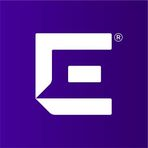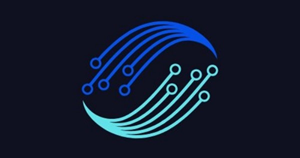The AI Infrastructure Revolution: Pioneering the Future of Data Management and Security
August 2, 2024, 10:52 pm

Location: United States, Illinois, Chicago
Employees: 51-200
Founded date: 2017

Location: United States, California, San Jose
Employees: 1001-5000
Founded date: 1996
The landscape of artificial intelligence (AI) is evolving rapidly. Companies are racing to build robust infrastructures that can support the demands of AI applications. This race is not just about speed; it’s about efficiency, scalability, and security. As organizations grapple with the complexities of data management, several key players are emerging, each with unique solutions to address the challenges of the AI era.
MinIO has taken a bold step forward with its introduction of the MinIO DataPod. This innovative reference architecture is designed to support exascale AI workloads and large-scale data lakes. In a world where data is the new oil, MinIO positions itself as the refinery, transforming raw data into valuable insights. Its object storage technology is not just a tool; it’s a lifeline for developers and data engineers who need reliable access to vast amounts of information. The company’s recognition on the InfraRed 100 and its AI Breakthrough Award further solidify its status as a leader in the field.
As AI workloads grow, so do the complexities of managing them. The need for high concurrency, varied I/O workloads, and low latency is paramount. MinIO’s architecture is designed to meet these demands while minimizing costs. The financial math is clear: moving workloads back to private clouds can save organizations up to 70%. This shift is not just a trend; it’s a necessity for businesses looking to thrive in a data-driven world.
On another front, CUDO is making waves with its CUDOS Intercloud. This platform offers a decentralized GPU-as-a-Service solution tailored for Web3 communities and AI computational tasks. CUDO’s approach is akin to a marketplace, where resources are distributed across various vendors, providing flexibility and cost-effectiveness. In a landscape where traditional cloud services can be prohibitively expensive, CUDO’s model offers a breath of fresh air. The integration of NVIDIA GPUs enhances its capabilities, making it a formidable player in the AI infrastructure space.
Meanwhile, TerraZero Technologies is forging ahead with its collaboration with Qeleo. This partnership aims to enhance the scalability of TerraZero’s Intraverse, a platform designed for immersive virtual experiences. By leveraging AI tools, TerraZero seeks to streamline the creation of 3D environments, enabling artists and brands to generate content more efficiently. This collaboration is a testament to the power of combining creativity with technology, allowing for the rapid development of engaging virtual spaces.
In the realm of security, Protect AI is carving out a niche. With a recent $60 million Series B funding round, the company is poised to enhance its AI security posture management platform. As AI systems proliferate across industries, the need for robust security measures becomes critical. Protect AI’s comprehensive approach addresses vulnerabilities in machine learning systems, ensuring that organizations can deploy AI applications with confidence. The company’s growth trajectory is impressive, with a focus on continuous innovation and expanding its product offerings.
8×8 is also stepping into the spotlight with its Active Assessor solution. This AI-powered tool is designed for UK housing associations, helping them identify property faults and improve tenant satisfaction. By leveraging technology to streamline property management, 8×8 is addressing a pressing need in the housing sector. The proactive approach not only enhances tenant engagement but also reduces costs for landlords, showcasing the potential of AI in everyday operations.
As these companies push the boundaries of what’s possible, the importance of data analytics cannot be overstated. Colle AI is at the forefront of this movement, unveiling comprehensive analytics tools for tracking NFT performance. By providing real-time insights, Colle AI empowers artists, collectors, and investors to make informed decisions in the rapidly evolving digital art market. This focus on data-driven decision-making is essential for navigating the complexities of the NFT landscape.
Finally, Rhino.ai is making strides in application modernization. With a minority equity investment from KPMG US, the company is positioned to help organizations transition from outdated technology to modern platforms. This partnership underscores the growing recognition of AI as a key driver of digital transformation. By streamlining application development, Rhino.ai is enabling businesses to enhance operational efficiency and reduce costs.
In conclusion, the AI infrastructure revolution is well underway. Companies like MinIO, CUDO, TerraZero, Protect AI, 8×8, Colle AI, and Rhino.ai are leading the charge, each contributing unique solutions to the complex puzzle of data management, security, and application modernization. As the demand for AI continues to rise, these innovators are not just keeping pace; they are setting the standard for what’s possible in the digital age. The future is bright, and those who harness the power of AI infrastructure will undoubtedly thrive in this new landscape.
MinIO has taken a bold step forward with its introduction of the MinIO DataPod. This innovative reference architecture is designed to support exascale AI workloads and large-scale data lakes. In a world where data is the new oil, MinIO positions itself as the refinery, transforming raw data into valuable insights. Its object storage technology is not just a tool; it’s a lifeline for developers and data engineers who need reliable access to vast amounts of information. The company’s recognition on the InfraRed 100 and its AI Breakthrough Award further solidify its status as a leader in the field.
As AI workloads grow, so do the complexities of managing them. The need for high concurrency, varied I/O workloads, and low latency is paramount. MinIO’s architecture is designed to meet these demands while minimizing costs. The financial math is clear: moving workloads back to private clouds can save organizations up to 70%. This shift is not just a trend; it’s a necessity for businesses looking to thrive in a data-driven world.
On another front, CUDO is making waves with its CUDOS Intercloud. This platform offers a decentralized GPU-as-a-Service solution tailored for Web3 communities and AI computational tasks. CUDO’s approach is akin to a marketplace, where resources are distributed across various vendors, providing flexibility and cost-effectiveness. In a landscape where traditional cloud services can be prohibitively expensive, CUDO’s model offers a breath of fresh air. The integration of NVIDIA GPUs enhances its capabilities, making it a formidable player in the AI infrastructure space.
Meanwhile, TerraZero Technologies is forging ahead with its collaboration with Qeleo. This partnership aims to enhance the scalability of TerraZero’s Intraverse, a platform designed for immersive virtual experiences. By leveraging AI tools, TerraZero seeks to streamline the creation of 3D environments, enabling artists and brands to generate content more efficiently. This collaboration is a testament to the power of combining creativity with technology, allowing for the rapid development of engaging virtual spaces.
In the realm of security, Protect AI is carving out a niche. With a recent $60 million Series B funding round, the company is poised to enhance its AI security posture management platform. As AI systems proliferate across industries, the need for robust security measures becomes critical. Protect AI’s comprehensive approach addresses vulnerabilities in machine learning systems, ensuring that organizations can deploy AI applications with confidence. The company’s growth trajectory is impressive, with a focus on continuous innovation and expanding its product offerings.
8×8 is also stepping into the spotlight with its Active Assessor solution. This AI-powered tool is designed for UK housing associations, helping them identify property faults and improve tenant satisfaction. By leveraging technology to streamline property management, 8×8 is addressing a pressing need in the housing sector. The proactive approach not only enhances tenant engagement but also reduces costs for landlords, showcasing the potential of AI in everyday operations.
As these companies push the boundaries of what’s possible, the importance of data analytics cannot be overstated. Colle AI is at the forefront of this movement, unveiling comprehensive analytics tools for tracking NFT performance. By providing real-time insights, Colle AI empowers artists, collectors, and investors to make informed decisions in the rapidly evolving digital art market. This focus on data-driven decision-making is essential for navigating the complexities of the NFT landscape.
Finally, Rhino.ai is making strides in application modernization. With a minority equity investment from KPMG US, the company is positioned to help organizations transition from outdated technology to modern platforms. This partnership underscores the growing recognition of AI as a key driver of digital transformation. By streamlining application development, Rhino.ai is enabling businesses to enhance operational efficiency and reduce costs.
In conclusion, the AI infrastructure revolution is well underway. Companies like MinIO, CUDO, TerraZero, Protect AI, 8×8, Colle AI, and Rhino.ai are leading the charge, each contributing unique solutions to the complex puzzle of data management, security, and application modernization. As the demand for AI continues to rise, these innovators are not just keeping pace; they are setting the standard for what’s possible in the digital age. The future is bright, and those who harness the power of AI infrastructure will undoubtedly thrive in this new landscape.
